In late 2020, the Pentagon ramped up aerial and naval deployments around Iran amid military tensions in the Persian Gulf. The new deployments began in late November 2020 and continued through 2022. They included several flights of B-52 or B-1 bombers, a nuclear-powered submarine and a carrier strike group led by the USS Nimitz. President Donald Trump also threatened Iran after the U.S. Embassy in Baghdad was hit by rockets allegedly fired by an Iraqi militia backed by Iran on Dec. 20, 2020. “We hear chatter of additional attacks against Americans in Iraq,” Trump tweeted on Dec. 23, 2020. “If one American is killed, I will hold Iran responsible. Think it over.”
Bomber flights to the Persian Gulf continued during the Biden administration. After two B-52s flew near Iran in September 2022, “Missions like this ... showcase our ability to combine forces to deter and, if necessary, defeat our adversaries,” Lt. Gen. Alexus Grynkewich, the top U.S. Air Force officer in the Middle East said in a statement. “Threats to the U.S. and our partners will not go unanswered.” U.S. military deployments included:
- Nov. 21, 2020: First B-52 flights to the Persian Gulf
- Nov. 27, 2020: U.S. deployed the USS Nimitz to the Arabian Sea
- Dec. 10, 2020: Second B-52 flights to the Persian Gulf
- Dec. 21, 2020: Nuclear-powered submarine crossed the Strait of Hormuz
- Dec. 30, 2020: Third B-52 flights to the Persian Gulf
- Dec. 31, 2020: The Pentagon ordered the USS Nimitz to return to base in Bremerton, WA
- Jan. 3, 2021: The Pentagon canceled USS Nimitz return and ordered it to stay in Central Command theater of operations
- Jan. 6, 2021: Fourth B-52 flights to the Persian Gulf
- Jan. 17, 2021: Fifth B-52 flights to the Persian Gulf
- Jan. 27, 2021: Sixth B-52 flights to the Persian Gulf
- March 7, 2021: Seventh B-52 flights to the Persian Gulf
- Oct. 30, 2021: B-1B flight to the Persian Gulf, the Red Sea and the Suez Canal
- Nov. 11, 2021: B-1B flight to the Red Sea
- Feb. 14, 2022: Eighth B-52 flights to the Persian Gulf and the Red Sea
- March 29, 2022: Ninth B-52 flights to the Persian Gulf and the Red Sea
- June 8, 2022: Tenth B-52 flights to the Persian Gulf and the Red Sea
- Sept. 4, 2022: B-52 flight over the eastern Mediterranean, the Arabian Peninsula and the Red Sea
- Nov. 10, 2022: B-52 flight to the Middle East
- March 12, 2023: B-52 Flights to the Middle East
- June 8, 2023: B-1 Flights to the Persian Gulf
- July 14, 2023: U.S. deployed the USS Thomas Hudner to the Middle East
- July 20, 2023: U.S deployed an amphibious readiness group including three ships and thousands of Marines to the Middle East
Iranian officials condemned the increased tempo of U.S. deployments and public threats. “Instead of fighting Covid in US, @realDonaldTrump & cohorts waste billions to fly B52s & send armadas to OUR region,” Foreign Minister Mohammad Javad Zarif tweeted on Dec. 31, 2020. “Iran doesn't seek war but will OPENLY & DIRECTLY defend its people, security & vital interests.” The Iranian mission to the United Nations demanded that the Security Council curtail U.S. “military adventurism” in the Gulf.
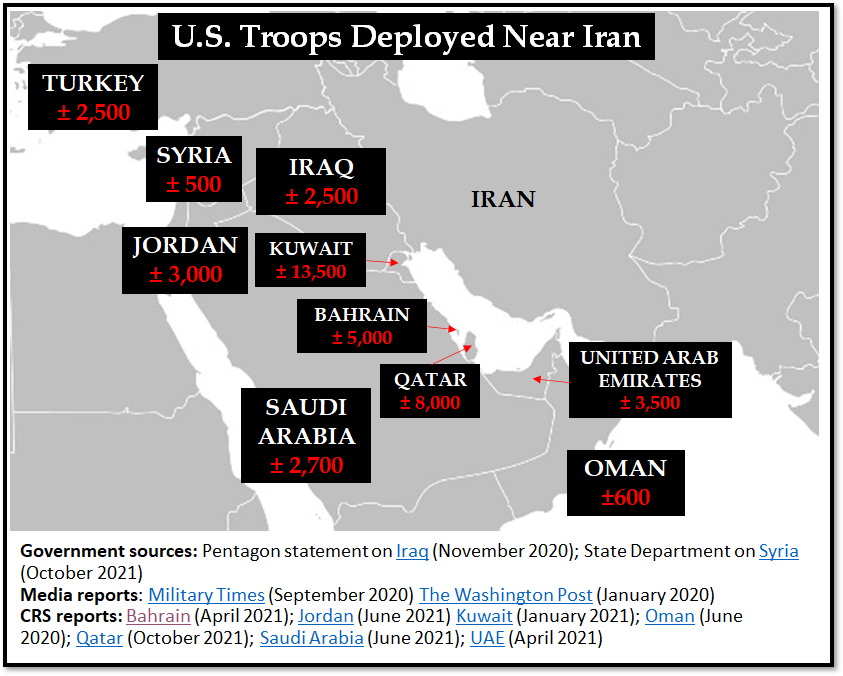 Tensions between Washington and Tehran escalated ahead of the one-year anniversary of the assassination of Qassem Soleimani, the commander of Iran’s elite Qods Force, who was killed in a U.S. drone strike on Jan. 3, 2020. The Pentagon sent additional assets to the Middle East amid intelligence reports of about plans by Iranian-backed militias to attack U.S. and allied interests in Iraq. But just two days before the anniversary, Acting Secretary of Defense Christopher Miller ordered the USS Nimitz to return to base in Bremerton, Washington. On Jan. 3, 2021, the Pentagon canceled the redeployment and ordered the Nimitz to remain in the Middle East.
Tensions between Washington and Tehran escalated ahead of the one-year anniversary of the assassination of Qassem Soleimani, the commander of Iran’s elite Qods Force, who was killed in a U.S. drone strike on Jan. 3, 2020. The Pentagon sent additional assets to the Middle East amid intelligence reports of about plans by Iranian-backed militias to attack U.S. and allied interests in Iraq. But just two days before the anniversary, Acting Secretary of Defense Christopher Miller ordered the USS Nimitz to return to base in Bremerton, Washington. On Jan. 3, 2021, the Pentagon canceled the redeployment and ordered the Nimitz to remain in the Middle East.
Timeline
Nov. 21, 2020: First B-52 Flights to the Persian Gulf
The Pentagon ordered two B-52H Stratofortress bombers based near Minot, North Dakota on a round-trip mission to the Persian Gulf. Civilian trackers spotted the bombers flying through Israeli and Jordanian airspace before the pilots shut off their transponders. The bombers were joined by U.S. fighter jets and refueling aircraft during the more than 24-hour flight. The mission was designed to “deter aggression and reassure U.S. partners and allies,” U.S. Central Command (CENTCOM) said in a statement. “The United States does not seek conflict but continues to be postured and committed to respond to any contingency around the world.”
CENTCOM statement on Nov. 21, 2020: "U.S. Air Force B-52H 'Stratofortress' aircrews assigned to the 5th Bomb Wing, Minot Air Force Base, N.D., conducted a short-notice, long-range mission into the Middle East on Nov. 21 to deter aggression and reassure U.S. partners and allies.
"The non-stop mission demonstrates the U.S. military’s ability to deploy combat airpower anywhere in the world on short notice and integrate into CENTCOM operations to help preserve regional stability and security.
"'Bomber Task Force missions highlight the robust and varied USAF capabilities that can be made rapidly available in the CENTCOM AOR,' said Lt. Gen. Greg Guillot, 9th Air Force (Air Forces Central) commander. 'The ability to quickly move forces into, out of and around the theater to seize, retain and exploit the initiative is key to deterring potential aggression. These missions help bomber aircrews gain familiarity with the region’s airspace and command and control functions and allow them to integrate with the theater’s U.S. and partner air assets, increasing the combined force’s overall readiness.'
"During the mission, the bomber aircrews integrated with air operations centers and other AFCENT assets such as F-15E 'Strike Eagles,' F-16 'Fighting Falcons,' KC-10 'Extenders' and KC-135 'Stratotankers.'
"CENTCOM is committed to preserving and protecting the freedom of navigation and the free flow of commerce throughout the region. The United States does not seek conflict but continues to be postured and committed to respond to any contingency around the world.
"The last U.S. long-range bomber presence in the Middle East was in early 2020."
Nov. 27, 2020: U.S. Deploys the USS Nimitz to the Arabian Sea
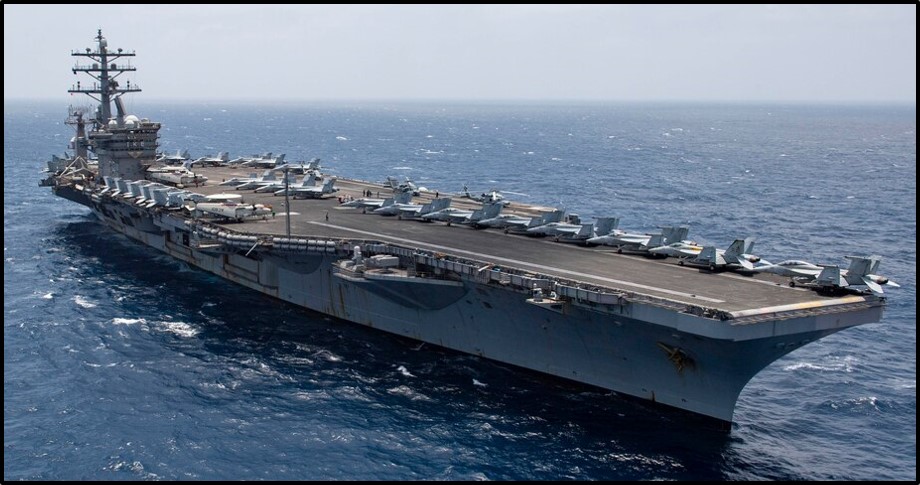
U.S. Navy statement to Reuters on Nov. 28, 2020: “There were no specific threats that triggered the return of the Nimitz Carrier Strike Group…This action ensures we have sufficient capability available to respond to any threat and to deter any adversary from acting against our troops during the force reduction.”
Dec. 10, 2020: Second B-52 Flights to the Persian Gulf
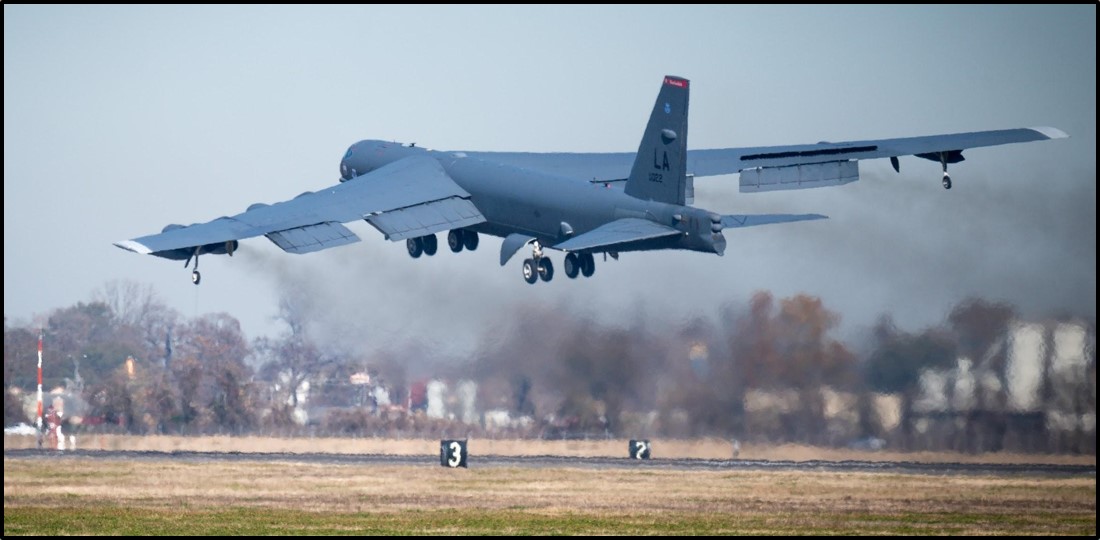
CENTCOM statement on Dec. 10, 2020: "A pair of U.S. Air Force B-52H 'Stratofortresses' assigned to the Barksdale Air Force Base-headquartered 2nd Bomb Wing operated in the U.S. Central Command area of responsibility with other U.S. Air Force and regional partner aircraft in the second mission in as many months.
"The short-notice, non-stop mission was designed to underscore the U.S. military’s commitment to its regional partners, while also validating the ability to rapidly deploy combat power anywhere in the world, said the senior commander of U.S. forces in the Middle East.
"'The ability to fly strategic bombers halfway across the world in a non-stop mission, and to rapidly integrate them with multiple regional partners demonstrates our close working relationships and our shared commitment to regional security and stability,' said U.S. Central Command’s (CENTCOM) commander, Gen. Frank McKenzie.
"While assuring allies and partners, the mission was also designed to deter aggression.
"'Potential adversaries should understand that no nation on earth is more ready and capable of rapidly deploying additional combat power in the face of any aggression,' said McKenzie.
"Our ability to work together as partners on a mission like this heightens our collective readiness to respond to any crisis or contingency.
"The U.S. Air Force routinely flies a variety of aircraft and units throughout the Middle East, which is one way that CENTCOM promotes regional security. Temporary long-range bomber deployments into the region can be traced back to at least 2015.
"Aircrews use transponders and operate in conformity with international law, including with due regard for the safety of navigation of aircraft during every flight, and coordinate with relevant nations.
"'We do not seek conflict,' McKenzie said, 'but we must remain postured and committed to respond to any contingency or in opposition to any aggression.'"
Dec. 21, 2020: Nuclear-powered submarine crosses the Strait of Hormuz
The USS Georgia, one of the Navy’s four Ohio-class submarines, crossed the Strait of Hormuz. The crossing was the first U.S. submarine transit of the narrow international waterway in nearly a decade, The New York Times reported. The Georgia could “carry up to 154 Tomahawk land-attack cruise missiles” and transport “up to 66 Special Operations Forces,” the Navy said in a statement. The submarine was accompanied by two Ticonderoga-class cruisers also carrying missiles.
CENTCOM statement on Dec. 22, 2020: "The nuclear-power Ohio-class guided-missile submarine USS Georgia (SSGN 729) along with the guided-missile cruisers USS Port Royal (CG 73) and USS Philippine Sea (CG 58) transited the Strait of Hormuz entering the Arabian Gulf, Dec. 21.
"Georgia’s presence in the U.S. 5th Fleet area of operations (AOO) demonstrates the U.S. Navy’s ability to sail and operate wherever international law allows.
"As an inherently flexible maneuver force, capable of supporting routine and contingency operations, Georgia’s presence demonstrates the United States’ commitment to regional partners and maritime security with a full spectrum of capabilities to remain ready to defend against any threat at any time.
"SSGNs are one of the most versatile platforms in the fleet, equipped with superior communications capabilities and the ability to carry up to 154 Tomahawk land-attack cruise missiles. The platform can also be configured to host up to 66 Special Operations Forces.
"The 5th Fleet AOO encompasses about 2.5 million square miles of water area and includes the Arabian Gulf, Gulf of Oman, Red Sea and parts of the Indian Ocean. The expanse is comprised of 20 countries and includes three chokepoints, critical to the free flow of global commerce."
Dec. 30, 2020: Third B-52 Flights to the Persian Gulf

CENTCOM Statement on Dec. 30, 2020: "U.S. Air Force B-52H 'Stratofortress' aircrews from the Minot Air Force Base, N.D.-headquartered 5th Bomb Wing made a deliberate appearance in the Middle East today to underscore the U.S. military's commitment to regional security and demonstrate a unique ability to rapidly deploy overwhelming combat power on short notice.
"The two-ship deployment also delivers a clear deterrent message to anyone who intends to do harm to Americans or American interests.
"'The United States continues to deploy combat-ready capabilities into the U.S. Central Command area of responsibility to deter any potential adversary, and make clear that we are ready and able to respond to any aggression directed at Americans or our interests" said Gen. Frank McKenzie, Commander, U.S. Central Command. "We do not seek conflict, but no one should underestimate our ability to defend our forces or to act decisively in response to any attack."
"The United States continues to work closely with allies and partner to advance regional security and stability.
"This mission is the third bomber deployment into CENTCOM's area of operation in the last 45 days."
Dec. 31, 2020: The Pentagon orders the USS Nimitz to return to base in Bremerton, WA
The Pentagon ordered the USS Nimitz, the sole aircraft carrier in the Middle East, to return to Naval Base Kitsap in Bremerton, Washington. Acting Secretary Miller wanted to send a “de-escalatory” signal to Iran with the redeployment, The New York Times reported. He reportedly overruled a request by Gen. McKenzie to extend the USS Nimitz’s deployment amid intelligence reports that Iran and its proxies were preparing an attack against the U.S. military and its allies in Iraq. “We are glad that we can conclude 2020 by announcing these warriors are headed home,” the Pentagon said in a statement.
Department of Defense statement on Dec. 31, 2020: "Following its role in providing support to American troops in Somalia and the arrival of follow-on operational capability, Acting Secretary of Defense Chris Miller has directed that the USS Nimitz will transit directly home to complete a nearly 10-month deployment.
"'The Secretary appreciates the hard work, commitment, and flexibility of more than 5,000 Sailors and Marines of the Nimitz Carrier Strike Group who repeatedly demonstrated operational excellence in providing air support to combat operations against terrorists in Iraq and Afghanistan and ensuring maritime security in critical waterways," said Jonathan Rath Hoffman, Assistant to the Secretary of Defense for Public Affairs.
"'The Nimitz team provided persistent air cover during the troop drawdowns in Afghanistan and conducted operations and exercises that strengthened enduring partnerships and alliances in the U.S. Central Command and U.S. Indo-Pacific Command areas of responsibility."
"'They conducted themselves admirably throughout the deployment despite the many challenges presented by the coronavirus pandemic."
"'The sacrifices and services of the Sailors, Marines, and their families is greatly appreciated by the entire Department of Defense and were in the finest traditions of the U.S. naval service. We are glad that we can conclude 2020 by announcing these warriors are headed home."
Jan. 3, 2021: The Pentagon cancels USS Nimitz return and orders it to stay in Central Command theater of operations
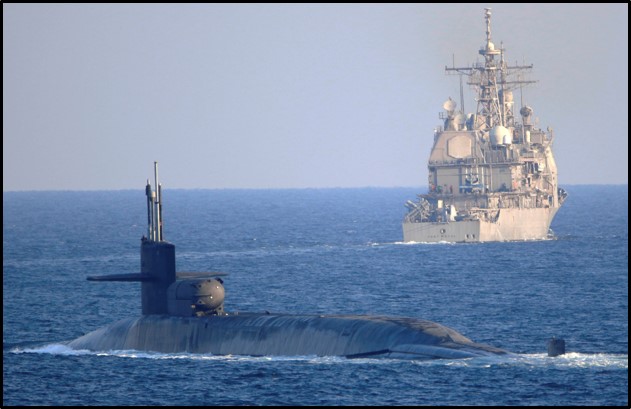
Department of Defense statement on Jan. 3, 2021: "The following statement is attributable to Acting Secretary of Defense Chris Miller.
"'Due to the recent threats issued by Iranian leaders against President Trump and other U.S. government officials, I have ordered the USS Nimitz to halt its routine redeployment. The USS Nimitz will now remain on station in the U.S. Central Command area of operations. No one should doubt the resolve of the United States of America."
Jan. 6, 2021: Fourth B-52 Flights to the Persian Gulf
A fourth pair of B-52H Stratofortress bombers based near Minot, North Dakota flew a 36-hour, round-trip mission to the Persian Gulf. "This mission is a measured approach to demonstrate that we are committed to the defense of our forces in the region and are capable of responding to any aggression on short notice," CENTCOM said in a statement. The U.S. continued to receive intelligence about a plans for an attack by Iranian-backed militias in Iraq, a Pentagon official told CNN. "We continue to see increasing levels of readiness across Iranian defensive systems," the official said.
Statement by CENTCOM on January 7: "Two U.S. Air Force B-52H bombers conducted a Bomber Task Force mission today in the Middle East to demonstrate the U.S. military's continuing commitment to regional security and deterrence to aggression.
"The aircrews flew a 36-hour, non-stop mission from the 5th Bomb Wing's home at Minot Air Force Base, N.D., to the Arabian Gulf and back to send a clear deterrent message by displaying the ability to deploy overwhelming combat power on short notice.
"The temporary deployment, the fourth in the last two months and the command's first bomber mission of 2021, is one element of a robust U.S. defensive posture that includes the USS Nimitz (CVN-68) aircraft carrier and other assets.
"The B-52H 'Stratofortress' is a long-range, heavy bomber that can perform a variety of missions. The bomber can fly at high subsonic speeds at altitudes reaching 50,000 feet. It has an unrefueled combat range in excess of 8,800 miles. The B-52H can carry precision guided ordnance with worldwide precision navigation.
"'America doesn't seek conflict,' said U.S. Navy Capt. Bill Urban, U.S. Central Command spokesman. 'This mission is a measured approach to demonstrate that we are committed to the defense of our forces in the region and are capable of responding to any aggression on short notice."
Jan. 17, 2021: Fifth B-52 Flights to the Persian Gulf
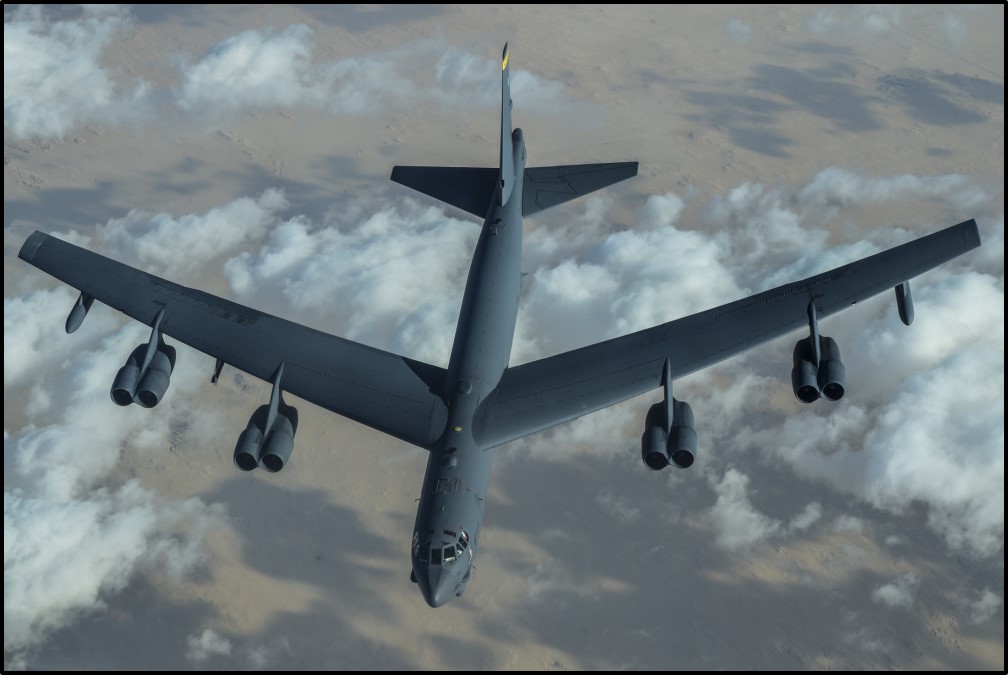
A fifth pair of B-52H Stratofortress bombers flew from Minot, North Dakota, on a 36-hour, round-trip mission to the Persian Gulf. The mission was a so-called "presence patrol" showcasing U.S. military power, McKenzie said. “Short-term deployments of strategic assets are an important part of our defensive posture in the region,” he said. Zarif insisted that the flights would not intimidate Iran. "While we have not started a war in over 200 years, we don’t shy from crushing aggressors," he tweeted.
Statement by CENTCOM on January 17: "U.S. Air Force B-52H 'Stratofortress"' aircrews successfully completed a presence patrol in the Middle East today, marking the second such mission of 2021.
"Bomber Task Force missions are observable ways to demonstrate the U.S. military's continuing commitment to regional security, said U.S. Central Command’s commander.
"'Short-term deployments of strategic assets are an important part of our defensive posture in the region,' said Gen. Frank McKenzie. 'The training opportunity and continued integration with regional partners improves readiness and delivers a clear and consistent message in the operational environment to both friends and potential adversaries, alike."
"This is the fifth Bomber Task Force mission into the Middle East in the last few months."
Jan. 27, 2021: Sixth B-52 Flight to the Persian Gulf
The Pentagon ordered two additional B-52H Stratofortress bombers based near Bossier City, Louisiana on a round-trip mission to the Persian Gulf. The planes flew over Saudi Arabia, where they were joined by Royal Saudi Air Force F-15s, the Associated Press reported. The flights were the first heavy bomber flights to the region since President Joe Biden was sworn into office. "The timing was determined based on the value of deterrence after inauguration,” a U.S. military official told DefenseOne. “I do know if we can continue to deter Iranian aggression… that it’ll give the policymakers more decision space.” CENTCOM emphasized in an official statement that it did "not seek conflict" but was "postured and committed to respond to any contingency around the world."
Statement by CENTCOM on January 27: "For the third time this year, U.S. Air Force B-52H 'Stratofortress' aircrews assigned to the 2nd Bomb Wing, Barksdale Air Force Base, La., successfully completed a presence patrol in the Middle East today.
"This long-range, short-duration defensive mission was intended to demonstrate the U.S. military’s ability to deploy airpower anywhere in the world to deter potential aggression and showcase the U.S. commitment to regional security.
"During the mission, the bomber aircrews integrated with air operations centers and other AFCENT assets such as F-15E 'Strike Eagles,' F-16 'Fighting Falcons,' KC-10 'Extenders' and KC-135 'Stratotankers.'
"The B-52H 'Stratofortress' is a long-range, heavy bomber that can perform a variety of missions. The bomber can fly at high subsonic speeds at altitudes reaching 50,000 feet. It has an unrefueled combat range in excess of 8,800 miles. The B-52H can carry a wide variety of precision guided ordnance. CENTCOM is committed to partner security and preserving regional stability. The United States does not seek conflict, but continues to be postured and committed to respond to any contingency around the world."
March 7, 2021: Seventh B-52 Flights to the Persian Gulf
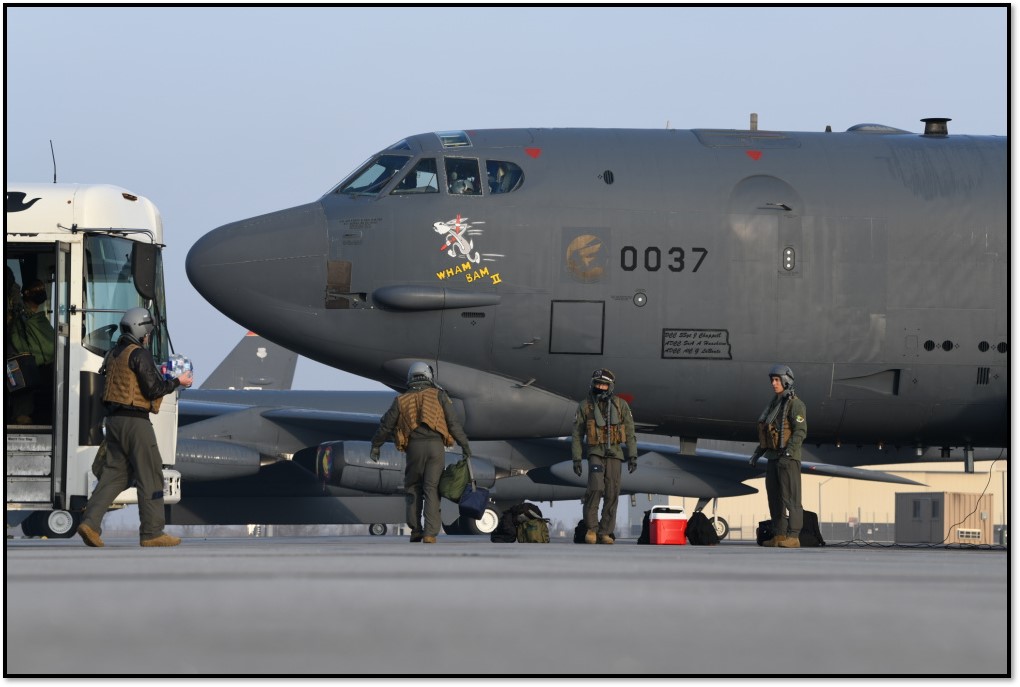
The Pentagon ordered a pair of B-52H Stratofortress bombers based at Minot Air Force Base in North Dakota on a round-trip mission to the Persian Gulf. The bombers were escorted by Israeli, Qatari and Saudi warplanes at different points during the trip. Four Israeli F-15 fighters joined the bombers as they flew through Israeli airspace, The Times of Israel reported. The bomber flights followed a rocket attack against an Iraqi base housing U.S. troops on March 3. Defense Secretary Lloyd Austin said that the U.S. planned an "appropriate" response for the rocket attack. "The message to those that would carry out such an attack is that: Expect us to do what's necessary to defend ourselves," Austin told ABC News the same day as the bomber flight.
Statement by CENTCOM on March 7: "A pair of U.S. Air Force B-52H 'Stratofortresses' flew a multinational patrol mission across the Middle East today to deter aggression and reassure partners and allies of the U.S. military’s commitment to security in the region.
"Multiple partner nations and U.S. Air Force fighter aircraft accompanied the U.S. bombers at different points during the flight, including Israel, Saudi Arabia and Qatar.
"The U.S. Air Force routinely moves aircraft and personnel into, out of, and around the U.S. Central Command area of responsibility to meet mission requirements, and to train with regional partners, underscoring the importance of strategic partnerships.
"Temporary long-range bomber deployments into the region dates back to 2015. This was the fourth bomber deployment into the Middle East this year."
Oct. 30, 2021: B-1B Flight to the Persian Gulf
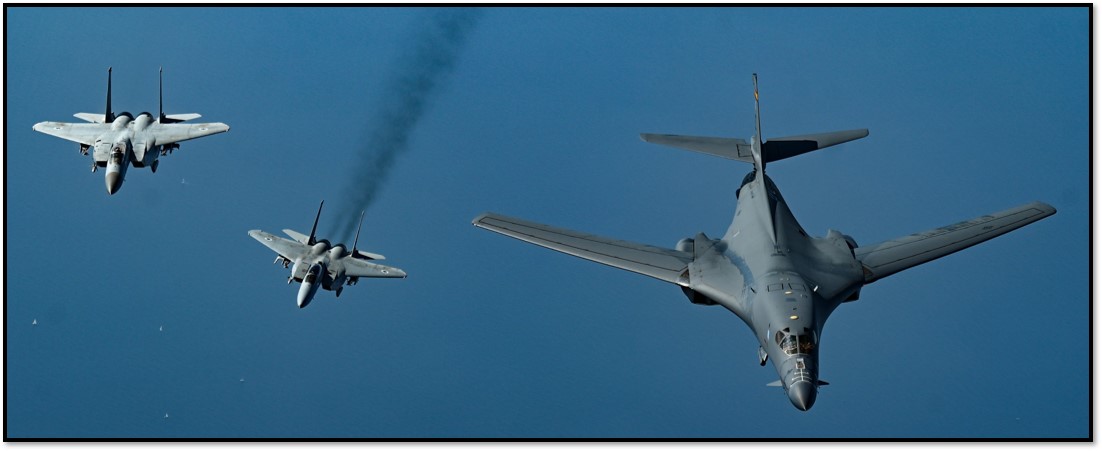
The Pentagon ordered a B-1B bomber based at Ellsworth Air Force Base in South Dakota to fly over the Strait of Hormuz, the Red Sea and the Suez Canal. The strategic bomber was escorted by fighters from Bahrain, Egypt, Israel, and Saudi Arabia at different points during the trip. “The mission is the fifth of its kind in 2021 and was designed to send a clear message of reassurance across the region,” U.S. Air Forces Central Command said. The flights followed a drone attack on U.S. forces based at al Tanf in southern Syria that U.S. officials blamed on Iran and its allies.
Statement by CENTCOM on October 30: One U.S. Air Force B-1B “Lancer” aircrew flew a presence patrol mission in the Central Region that included several partner nation air forces today.
The bomber task force mission – the fifth in U.S. Central Command’s area of operation this year – was intended to deliver a clear message of reassurance, said the command’s top general.
“We are stronger together,” said Gen. Frank McKenzie, commander, U.S. Central Command. “Military readiness for any contingency or mission – from crisis response to multilateral exercises to one-day presence patrols like this – depend on reliable partnerships.”
Bahrain, Egypt, Israel, and Kingdom of Saudi Arabia joined the patrol with fighter escorts over their respective airspaces. The five-hour, non-stop patrol originated in the Indian Ocean, flew over the Gulf of Aden, Bab el-Mandeb Strait, Red Sea, Suez Canal, Arabian Gulf, Strait of Hormuz and the Gulf of Oman before departing the region.
McKenzie said these types of missions can achieve a range of effects and are an important part of the command’s force posture.
CENTCOM coordinated four similar patrols – three in January and one in March – since the beginning of the 2021.
Nov. 11, 2021: B-1B Flights to the Red Sea
On Nov. 11, 2021, the United States ordered two B-1B bombers to fly to the Red Sea. Israeli and Saudi Arabian forces joined the two-hour long U.S. patrol over the region inside their respective airspaces. Several partner nations joined the presence patrol.
“Today’s presence patrol mission was an impressive demonstration of our combined power projection capabilities,” said Lt. Gen. Greg Guillot, Ninth Air Forces Central commander. “Simply put, each of our air forces is strong, and we are even stronger together.”
Statement by CENTCOM on November 11: “Two U.S. Air Force B-1B Lancers flew a presence patrol mission in the Central Region that included several coalition and partner nation air forces today.
“The bomber task force mission – the sixth in U.S. Central Command’s area of responsibility this year – represented the U.S. led coalition’s commitment to promoting regional stability through partnership.
“Israel and the Kingdom of Saudi Arabia joined the patrol over their respective airspaces, while U.S. fighter jets provided escort. The two-hour presence patrol flew into the CENTCOM AOR over the Red Sea and conducted rejoins with partner nations along the flight path before departing the region.
“CENTCOM has coordinated five similar patrols – three in January, one in March and one in October – since the beginning of the year.”
Feb. 14, 2022: Eighth B-52 Flights to Persian Gulf and Red Sea
On Feb. 14, 2022, the United States ordered one B-52H bomber and two Marine Corps F/A-18 jets on a mission to the Persian Gulf. The bomber departed from Royal Air Force Fairford, England and traveled over the east Mediterranean, Arabian Peninsula, and Red Sea.
“Today’s B-52-led demonstration of joint, coalition, and partner nation combat airpower was a powerful projection of our combined strength across the Middle East,” said Lt. Gen. Greg Guillot, Ninth Air Forces Central commander. “By originating outside the CENTCOM AOR, the mission also exemplified the U.S. Air Force’s ability to deliver combat airpower seamlessly across multiple combatant commands.”
The Israel Defense Forces (IDF) stated that Israeli F-15 jets escorted the U.S. bomber through Israeli airspace as it traveled to the Persian Gulf. “The flight was held as part of close cooperation with the US military, which represents a significant element in ensuring the security of the State of Israel’s airspace and the Middle East,” the IDF said in a statement. The Saudi Arabian Ministry of Defense also posted pictures of four Saudi F-15 jets escorting the U.S. bomber.
The mission originally included two B-52H strategic bombers, but one returned to Britain with engine issues after air-to-air refueling. The mission was the first U.S. presence patrol of 2022 after six such missions in 2021.
Statement by STRATCOM on February 14: “Regional and coalition air forces joined a U.S. Air Force B-52H Stratofortress and two U.S. Marine Corps F/A-18 Hornets on a presence patrol mission across the U.S. Central Command area of responsibility Feb. 14.
“The bombers’ flight originated at Royal Air Force Fairford, England, and flew over the East Mediterranean, Arabian Peninsula, and Red Sea before departing the Middle East.
“The mission, flown by aircrews assigned to the Minot Air Force Base, N.D.-headquartered 5th Bomb Wing, was the first presence patrol of 2022.
“U.S. Central Command, through 9th Air Force (AFCENT), facilitated six bomber task force missions throughout 2021 as a demonstration of the U.S.-led coalition’s commitment to promoting regional stability. The last bomber-led mission across the Central Region involved two B-1B Lancers on Nov. 11, 2021.”
March 29, 2022: Ninth B-52 Flights to the Persian Gulf and the Red Sea
On March 29, 2022, the United States ordered one B-52 bomber and two F-22 jets to fly over the east Mediterranean, Arabian Peninsula, and Red Sea. The flight team departed from Royal Air Force Fairford, England. Nine regional partners, including the British Royal Air Force, provided fighter escorts to portray combined capabilities.
“With each bomber task force mission, AFCENT and partner air forces demonstrate the strength of regional airpower,” said Lt. Gen. Greg Guillot, Ninth Air Forces Central commander. “An unprecedented nine countries flew with our B-52 today, so this mission clearly signaled our ability to quickly bring forces to the theater and operate seamlessly with our partners during a training event that signals our combined commitment to regional stability and defense.”
Statement by CENTCOM on March 29: “Coalition and regional partner air forces joined a U.S. Air Force B-52 Stratofortress and two F-22 Raptors on a presence patrol mission across the U.S. Central Command area of responsibility March 29.
“The bomber’s flight originated at Royal Air Force Fairford, England, and flew over the East Mediterranean, Arabian Peninsula, and Red Sea before departing the region.
“The non-stop B-52 mission included fighter escorts from the Royal Air Force and regional partner nations, enhancing regional stability and security through a show of combined strength and capability.
“The flow of airpower throughout theater during this presence patrol was significant due to the addition of F-22s, which entered the USCENTCOM AOR in February.
“The B-52 and their aircrew are assigned to 5th Bomb Wing, Minot Air Force Base, North Dakota and flew the mission under Air Force Global Strike Command’s bomber task force mission-set.
“USCENTCOM, through Ninth Air Force (AFCENT), has facilitated two bomber task force missions in 2022 as a demonstration of the U.S.-led coalition’s commitment to promoting regional stability. The last bomber-led mission across the Central Region involved one B-52 and occurred Feb. 14, 2022.”
June 8, 2022: Tenth B-52 Flights to the Persian Gulf
The United States ordered two B-52 bombers, two KC-10 cargo aircraft, and three KC-135s refueling aircraft to fly to the Arabian Peninsula on June 8. The bombers departed from Minot Air Force Base in North Dakota, flying over the east Mediterranean, Arabian Peninsula, and Red Sea for a nine-hour patrol.
“Presence patrols, like todays, show the United States’ continued commitment and interoperability with our partners in the region,” said Lt. Gen. Greg Guillot, Ninth Air Forces Central commander. “These highly coordinated efforts demonstrate our combined ability to provide global reach and joint security to the region.” Aircraft from several regional partners joined the U.S. bombers in the exercise.
Statement by CENTCOM on June 9: “Coalition and regional partner air forces joined two U.S. Air Force B-52 Stratofortresses, two KC-10 Extenders, three KC-135s Stratotankerers on a presence patrol mission across the U.S. Central Command area of responsibility June 8, 2022.
“The bomber’s flight originated at Minot Air Force Base (AFB), North Dakota, and flew over the East Mediterranean, Arabian Peninsula, and Red Sea before departing the region.
“The flow of air power throughout the theater during this presence patrol was significant due to the number of joint and regional partners participating and the long duration of the U.S.-based mission, which demonstrated U.S. capabilities to rapidly respond to threats worldwide. The nine-hour presence patrol flew into the USCENTCOM AOR over the Red Sea and conducted rejoins with partner nations along the flight path before departing the region.
“The B-52 and their aircrew are assigned to 5th Bomb Wing, Minot AFB and flew the mission under Air Force Global Strike Command’s bomber task force mission-set.
USCENTCOM, through Ninth Air Force (AFCENT), has facilitated three presence patrol missions in 2022 as a demonstration of the U.S.-led coalition’s commitment to promoting regional stability. The last bomber-led mission across the Central Region involved one B-52 and occurred Mar. 29, 2022.”
Sept. 4, 2022: B-52 Flights to the Persian Gulf
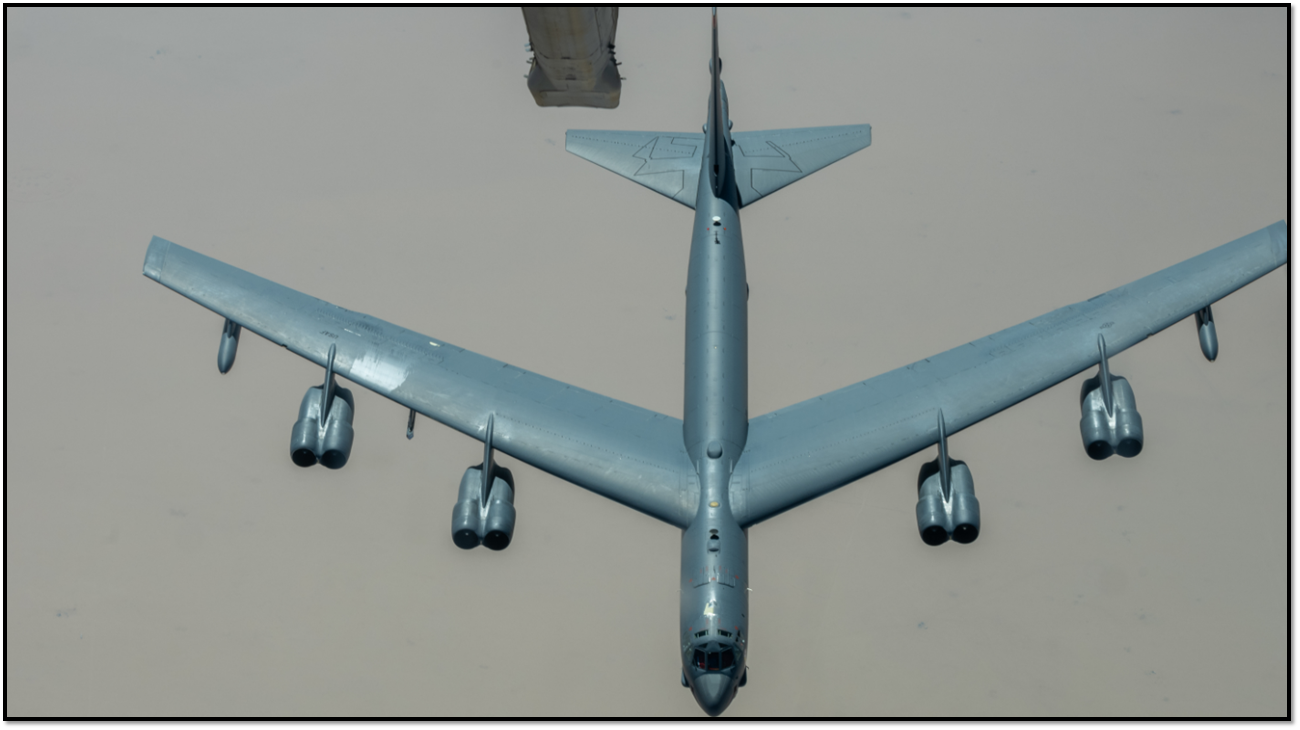
On Sept. 4, 2022, the United States ordered two long-distance B-52 bombers to fly across the eastern Mediterranean, Arabian Peninsula and Red Sea in a complex training mission accompanied by Saudi, Kuwaiti and Britain warplanes and supported by 16 nations, the Pentagon said in a statement. The Israeli military reported that three Israeli F-16 warplanes joined the leg over Israel, although their participation was omitted from the U.S. press release.
“The U.S. does not seek conflict but continues to be postured and committed to respond to any contingency” in the territory where U.S. Central Command operates, the Air Force said. The mission demonstrated the “collective capabilities of the military partnership we’ve developed in the Middle East,” said Gen. Michael “Erik” Kurilla, the head of Central Command. “We have the ability to put a significant measure of combat power in the air alongside our partners very quickly. We can do the same on the ground and at sea.”
The operation followed renewed tensions between the United States and Iran in the Persian Gulf. In late August, Iran’s Revolutionary Guards intercepted a U.S. sea drone that was conducting surveillance in the Gulf and tried to drag it away. The Saildrone Explorer is equipped with sensitive radar, sensors and cameras. Iran only released the drone after a U.S. warship and helicopter approached.
In a second incident in early September, the Iranian Navy—which operates separately from the Revolutionary Guards--seized two more U.S. sea drones that were operating in the Red Sea. An Iranian warship, the Jamaran, hoisted the two drones aboard and covered them with tarp. Again under pressure from the U.S. Navy, Iran released the two drones the next day.
The drones are part of a new U.S. task force launched in 2021 that includes underwater, airborne and surface drones. “We want to put more systems out in the maritime domain above, on and below the sea,” Vice Admiral Brad Cooper, commander of the Fifth Fleet, said in September 2021. “We want more eyes on what’s happening out there.” The U.S. Fifth Fleet is based in Bahrain across the Gulf waters from Iran. Some 20 percent of the world’s oil exports travel through the Gulf and the strategic Strait of Hormuz to the outside world.
The tensions also overlapped with stalled diplomacy between the world’s six major powers and Iran designed to limit Tehran’s controversial nuclear program. On September 5, the European Union’s foreign policy chief, Josep Borrell said the 17-month talks designed to revive full Iranian and U.S. compliance with the 2015 nuclear deal were in trouble due to a widening gap between Washington and Tehran. “The last interaction is not converging, it is diverging,” he told a press conference. “That is very much worrisome, if the process does not converge. The whole process is in danger.”
The new B-52 mission over the Gulf signified “a strong, clear representation of enduring U.S. commitment” to deter and, if necessary, defeat adversaries, said Lt. Gen. Alexus Grynkewich said in the Pentagon statement. It demonstrated the U.S. ability, in collaboration with allies, “to rapidly inject overwhelming combat power into the region on demand. Threats to the U.S. and our partners will not go unanswered.”
Nov. 10, 2022: B-52 Flights to the Middle East
On Nov. 10, 2022, the United States ordered two B-52 bombers to fly to the Middle East as part of a training mission involving forces from seven other countries, including Bahrain, Israel, Qatar and Saudi Arabia. “This Bomber Task Force mission demonstrates our commitment to regional security and the collective capabilities of our military partners in the region,” said Gen. Kurilla. “CENTCOM has the ability to very quickly put a significant amount of combat power in the air alongside our partners. We can do the same on the ground and at sea to meet any challenge decisively.”
American warplanes were escorted over the Arabian Peninsula by two Saudi F-15 and two Typhoon fighters, according to the Saudi defense ministry. They were then accompanied over Israeli airspace en route back to Louisiana, by Israeli F-35I Adir fifth-generation fighters, according to an IDF statement.
Statement by CENTCOM on Nov. 10, 2022: U.S. Central Command conducted a Bomber Task Force mission, Nov. 10, 2022.
“This Bomber Task Force mission demonstrates our commitment to regional security and the collective capabilities of our military partners in the region,” said Gen. Michael “Erik” Kurilla, commander of CENTCOM. “CENTCOM has the ability to very quickly put a significant amount of combat power in the air alongside our partners. We can do the same on the ground and at sea to meet any challenge decisively.”
This BTF marked the first multilateral use of Transverse, a program on the CENTCOM Partner Network that enhances partner nations’ operational situational awareness. Seven nations monitored the BTF on Transverse and will apply the lessons they learned to future operations. Programs like Transverse are a critical step to achieving a world class common operating picture in the CENTCOM AOR.
“This Bomber Task Force is a clear reflection of enduring U.S. commitment to the region,” said Lt. Gen. Alexus Grynkewich, Ninth Air Force (Air Forces Central) commander. “Together with our partners, we can rapidly inject overwhelming combat power into our common operating area. In this dynamic environment, no one can go it alone, and each BTF we execute allows us to deepen interoperability and practice key operational tasks with our allies and partners.”
During the BTF, two B-52H Stratofortress aircraft from the 2nd Bomb Wing at Barksdale AFB, Louisiana, integrated with 13 partner nation air forces, showcasing the ability to rapidly deploy global airpower alongside coalition and regional partner forces and ensuring the security of this critical region.
“The 609th Air Operations Center has witnessed an exponential increase in partner nation integration and cooperation with respect to day-to-day operations as a result of the coalition teamwork derived from the execution of BTF missions,” said Royal Canadian Air Force Lt. Col. Terry Wong, Canadian senior national representative.
“We are both enthusiastic and optimistic that future BTF missions will continue this trend of collaboration and solidarity.”
March 12, 2023: B-52 Flights to the Middle East
On March 12, 2023, the United States ordered two B-52 bombers to fly to the Middle East. “This Bomber Task Force mission is aimed at building partner capacity,” said Maj. Gen. Mark Slocum, deputy commander of Air Forces Central. “The Coalition conducts these integration events over partner nation airspace to expand our combined global reach and military power projection capabilities.” Seven partner nations sent fighter aircraft to escort the bombers, including two Israeli F-16 jets.
Statement by CENTCOM on March 13, 2023: “U.S. Air Forces Central conducted a Bomber Task Force mission, March 12.
“’This Bomber Task Force mission is aimed at building partner capacity,’ said Maj. Gen. Mark Slocum, Ninth Air Force (Air Forces Central) deputy commander. ‘The Coalition conducts these integration events over partner nation airspace to expand our combined global reach and military power projection capabilities.’
“The B-52H Stratofortress aircraft integrated with several coalition fighter escort aircraft from 7 nations as they traversed portions of the CENTCOM area of responsibility, showcasing the ability to rapidly deploy integrated airpower across the region.
AFCENT regularly conducts BTFs centered on strengthening regional partnerships, but the planning and execution of each iteration is unique.
“’Each mission of this length and complexity succeeds by the efforts of our professional Airmen around the globe,’ said Slocum. ‘From those who maintain or fly these bomber, tanker and fighter aircraft, to those behind the scenes who provide the weather forecasts and mission planning for this intricate sequence of escort and refueling across the region, each BTF we execute allows us to cooperate and practice key operational tasks with our partners. This BTF, like many others, continues and deepens a trajectory of collaboration and solidarity with Coalition and Partner forces.’”
June 8, 2023: B-1 Flights to the Persian Gulf
On June 8, 2023, the United States ordered two B-1 bombers to fly to the Middle East. “These bomber missions represent the U.S.’s commitment to our partners and showcase our ability to deliver overwhelming power at a moment’s notice,” said Lt. Gen. Alexus Grynkewich, commander of Air Forces Central. “The events demonstrate our ability – in concert with our partners – to employ overwhelming strike capabilities whenever and wherever required,” he added.
A U.S. Air Force B-1 Lancer conducted a mission flying from the UK to the #middleeast to build agility and interoperability between coalition partners and the U.S. For the first time it dropped multiple munition types on ranges in Saudi Arabia and Jordan @USAFCENT #PartnerNations pic.twitter.com/RZqAxGUUhK
— U.S. Central Command (@CENTCOM) June 9, 2023
Five partner nations—including Israel, Saudi Arabia, and Jordan—sent aircraft to escort the bombers. The bombers departed from Britain and flew over the Persian Gulf. They also bombed simulated targets in Saudi Arabia and Jordan with live munitions in a first for the periodic flyover missions.
Statement by Air Forces Central on June 8, 2023: “Ninth Air Force (Air Forces Central) aircraft joined 2 B-1B Lancers over the U.S. Central Command area of responsibility, along with five partner nations and other coalition forces, during a Bomber Task Force mission, June 8.
“This particular BTF mission was historic in that it was the first time AFCENT flew multiple weapons types and practiced employment against multiple simulated targets during a single bomber task force mission.
“The B-1B Lancers, assigned to Dyess Air Force Base’s 9th Bomb Squadron and currently forward deployed to the U.S. European Command area of responsibility, took off from Royal Air Force Fairford in the United Kingdom to join various fighter coalition forces throughout the CENTCOM region.
“During the BTF, the bombers employed live GBU-38 Joint Direct Attack Munitions, as well as a live AGM-158A Joint Air-to-Surface Standoff Missile.
“’These bomber missions represent the U.S.’s commitment to our partners and showcase our ability to deliver overwhelming power at a moment’s notice,’ said U.S. Air Force Lt. Gen. Alexus Grynkewich, Ninth Air Force (Air Forces Central) commander, and Combined Forces Air Component Commander for U.S. Central Command. ‘Together, we are operationalizing concepts designed to make us more agile in our execution, more strategic in our deterrence, and more resilient in our capability.’
“’Today was a demonstration of that capability and the strength of our partnerships.’
“Exercises like the BTF enhance U.S. interoperability with partner nations to deter regional aggression while promoting peace and stability in the Middle East.”
July 14, 2023: U.S. Deploys the USS Thomas Hudner to the Middle East
📸: Guided-missile destroyer USS Thomas Hudner (DDG 116) arrives in the Middle East operating area upon transiting the Suez Canal, July 14. Thomas Hudner is supporting U.S. 5th Fleet to help ensure regional maritime security and stability. pic.twitter.com/tphihpcZ51
— U.S. Naval Forces Central Command/U.S. 5th Fleet (@US5thFleet) July 16, 2023
The Navy’s Fifth Fleet deployed the guided-missile destroyer to the region “to help ensure regional maritime security and stability.” The move came weeks after Tehran attempted to seize two tankers around the Strait of Hormuz. The destroyer was equipped with dozens of surface-to-air missiles, anti-ship and -aircraft missiles, and torpedoes, among other systems.
July 20, 2023: U.S. Deploys Three Ships and Thousands of Marines to Middle East
Defense Secretary Lloyd Austin deployed an amphibious readiness group, reportedly including the USS Bataan assault ship as well as the transport ships USS Mesa Verde and USS Carter Hall. The United States also sent the 26th Marine Expeditionary Unit. The deployment included some 3,000 Marines and sailors. The move came less than a week after the United States deployed the USS Thomas Hudner in addition to F-35s and F-16s to the region.
Statement by CENTCOM on July 20, 2023: “In response to recent attempts by Iran to seize commercial ships in the CENTCOM area of operations, the Secretary of Defense has ordered the deployment of an Amphibious Readiness Group/Marine Expeditionary Unit (ARG/MEU) into the CENTCOM area of responsibility, in addition to the recently approved forces comprising F-35s, F-16s, and a guided missile destroyer, the USS Thomas Hudner (DDG-116). The ARG/MEU brings additional aviation, maritime assets, and U.S. Marines, providing even greater flexibility and maritime capability in the region.
“In the past two years, Iran has attacked, seized, or attempted seizure of nearly 20 internationally flagged merchant vessels in the CENTCOM area of operations.
“’U.S. Central Command is committed to defending freedom of navigation within our area of responsibility which includes some of the most important waterways in the world,’ said Gen. Michael “Erik” Kurilla, Commander U.S. Central Command. ‘These additional forces provide unique capabilities, which alongside our partners nations in the region, further safeguard the free flow of international commerce and uphold the rules based international order, and deter Iranian destabilizing activities in the region.’”
Sources for troop deployment
Government sources: Pentagon statement on Iraq (November 2020); State Department on Syria (October 2021)
Media reports: Military Times (September 2020) The Washington Post (January 2020)
CRS reports: Bahrain (April 2021); Jordan (June 2021) Kuwait (January 2021); Oman (June 2020); Qatar (October 2021); Saudi Arabia (June 2021); UAE (April 2021)
Photo credits: All photos from Department of Defense [Public Domain]
Andrew Hanna assembled the first version of this report in 2020.
